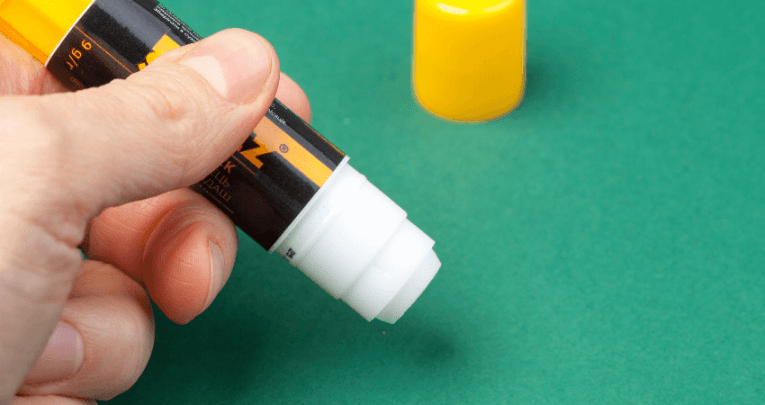Classroom materials – when is sharing not caring?

The way you store and distribute classroom resources says a lot to your pupils about priorities, says Rebecca Leek. So – who’s got the green paint?

- by Rebecca Leek

This article comes with a health warning. It may lead you to work through the cupboard in your classroom that hasn’t been tackled for years. It may even end up with a whole classroom reset. Hold onto your glue sticks.
My partner (not a teacher) thought it might be fun to get all the children in Reception to take off their shoes, put them in a pile and then see if they could put the right ones back on their feet again, just before home time.
The idea, he theorised, was to not worry too much if they went off with the wrong ones. A shoe is a shoe. He is a children’s author and comedian. Hilarious.
But whilst we wouldn’t dream of asking children to share around their shoes (imagine!) there are other things that seem completely sensible to share – reading books, for starters; maths manipulatives; stationery in communal pots.
We don’t, after all, give each child their own small world set in Early Years.
Teaching responsibility
As the children get older, things get a little bit more personalised and the general consensus with child psychologists seems to be that teaching children to be responsible for their own possessions is completely achievable from around six years old.
I will often see shared stationery in KS1 classrooms but by KS2, children have their own pencil cases.
This balance of the personal and communal is worth examining carefully. In schools, and also in other places of work and in society at large, things are often done a certain way because that’s how it’s always been done.
The maths books, one for every child, have always been kept on this shelf; the class oil pastels (neglected and incomplete) moulder in that cupboard.
Each table gets five glue sticks that stay in shared pots.
Last year I spent some time living in a tiny home. In fact, it was a shepherd’s hut. The power available was minimal and I took to using a headtorch.
When I then moved into something a little bit bigger, it felt strange to be wandering into different rooms, recklessly turning lights on.
The headtorch would have been absolutely fine. It was my very own Squash and a Squeeze experience. I only needed one personal light to illuminate my way.
The point is that, like all things, it is worth examining whether ‘what’s always been done’ is actually the best way of doing it.
When considering this question in your classroom you will also need to think about what your priorities are.
Classroom priorities
If you want lessons that are as efficient as possible, where every child has most of what they need to hand, then individual equipment needs to be personal and close by.
Where this isn’t possible, due to the classroom layout, systems need to be put in place.
Another priority might be that you want to provide responsibilities for the children in your class.
This is where class monitors come in – to hand out books and to look after materials and equipment after they have been used.
What you value in your classroom will seep through to the children.
If the art materials are dished out willy-nilly and are in a poor state, then there is a message then the children will pick up on. Why is drawing inferior to writing?
I introduced personal watercolour sets for every child when I was a headteacher. It meant that painting was given a new position in the grand order of things.
How to use floor books
Floor books or class record books can be very powerful for teaching; they tend to be used for more discussion-led lessons like Philosophy for Children.
But there is no reason why they can’t be used for other subjects, too. It might not be the right thing for your priorities but it is worth checking.
Would it be advantageous to discuss and record maths thinking in a shared class book? Individual practice can then be done in individual books.
There is no one way of doing things. Each school is different and that is a good thing.
What makes a great school is when there is thought and intention behind how things are done.
Glue sticks though? One per child please, with their name on, and initials on the lid.
Rebecca Leek has been a primary and secondary classroom teacher, head of department, SENCo, headteacher and MAT CEO. She is currently the executive director of the Suffolk Primary Headteachers’ Association and works as a freelance speaker, trainer and writer. Follow Rebecca on Twitter at @RebeccaLeek_ and see more of her work at rebeccaleek.com










